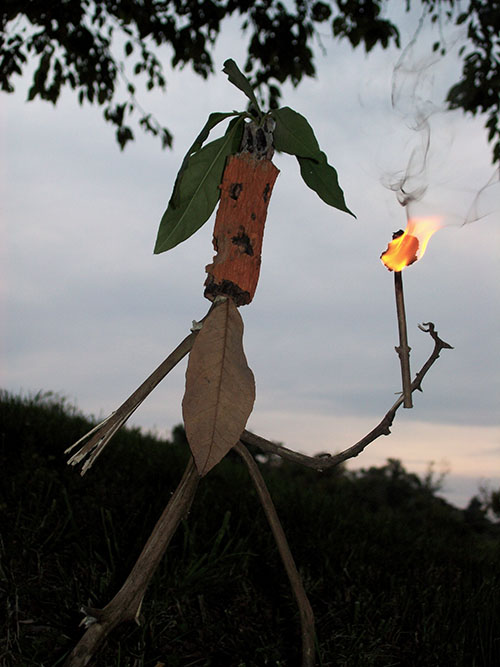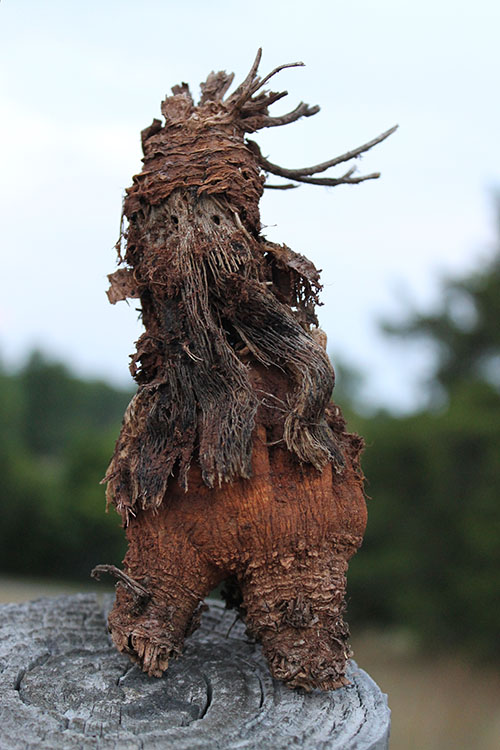Davis McCombs is the author of two poetry collections—Ultima Thule (Yale 2000) and Dismal Rock (Tupelo 2007)—and is the director of the Creative Writing Program at the University of Arkansas. His poems, “Ozark Landscape” and “Trespass,” are featured in issue 37.1 of The Journal. Recently, McCombs spoke with Associate Poetry Editor Matt Sumpter about the origin of these particular poems, the influence of the past on his work, and the artistic tension between multiple Davis McCombses.
Matt Sumpter: First of all, thanks so much for contributing your wonderful poems, “Ozark Landscape” and “Trespass,” to this issue of The Journal. You have already completed two collections, Ultima Thule (Yale University Press 2000) and Dismal Rock (Tupelo Press 2007). How do these two new poems relate to the work that has come before them?
Davis McCombs: I’m at a stage in the writing process now that makes answering that question difficult. I’m on leave this fall, deeply involved in the writing, so I’m too close to it, too embroiled in the messiness and failure and self-doubt of it right now to have any clear sense of how everything fits together. I suppose if I’ve learned anything over the years it’s that I shouldn’t try to force things to happen in my poems. This can be a real struggle, a lesson I keep learning and re-learning. But if I go into writing saying “Now I’m going to do this or that,” whatever that thing is is never ever ever going to happen, so it’s futile and wastes lots of time. I just have to be alert to the poems that come, to the images that start clustering together, and to the language that suddenly seems charged with possibility. The frustrating thing about my job teaching and directing the Creative Writing Program here is that sometimes I’ll feel a poem starting to happen, but so often I won’t be able to drop everything I’m doing and pursue it.
That’s the terrific thing about the semester away from the job: it’s time, lots of it, to make room for the possibility that poetry might happen.
I know this answer may make me sound flaky, but I find myself jealous (and maybe a little suspicious) of poets who can talk very fluidly and convincingly about their own work, their processes, etc. I just can’t—and anything I might be able to say will come much later, long after the writing.
MS: One of the most striking things about your poems is their embrace of landscape: quite often Kentucky, but in your poems for The Journal, also the Ozarks. The label “nature poetry” is tempting. Yet they are often full of man-made structures—barns and cabins, a graveyard, the Elgin Marbles—as well as memorable people: tobacco farmers, a slave working as a cave guide, Dante Gabriel Rossetti, even Bob Marley. So I’m curious to what extent you consider yourself a nature poet. What role do setting and environment play in your work? What is “nature poetry” anyway?
DM: It’s interesting that you should pick up on the change to the Ozark landscape in this particular poem. We’ve lived in the Arkansas Ozarks for ten years now and this is the only poem I have written specifically about this place. The poem’s genesis is also unlike any other I’ve ever experienced. Two summers ago now, for reasons I can’t articulate, I started making figures out of the rocks and twigs and bark and rotten vegetables, etc. etc., I found on our property.
Often these creations—I don’t know what to call them—were grotesque animals and anthropomorphic figures. Really, I think I was doing it for fun, to amuse our kids, just playing; I’ve never really lost my desire to play. Give me a pond, a pile of rocks, some sand or a riverbank and I can amuse myself for hours.
Anyway, I made a few of these things and then my wife, Carolyn Guinzio, a poet and photographer, started taking photos of the pieces. Somehow when I saw her photos, it was as if I was seeing the pieces for the first time. She managed to find and capture a quality in them that was kind of dark and mysterious and previously unknown to me. So then I started getting more serious about making the figures; I started finding them interesting. After we’d compiled a series of photos, I wrote a poem about one piece specifically, but also more generally about the experience of making all the pieces. It was a strange process and kind of wonderful. Once I started doing it, I found myself always being attuned to how the things I encountered could be re-purposed, re-imagined. In that way, I suppose, it was like writing a poem, and it all seemed to have something to do with being here, in this place.
So, as I say, this was a unique experience, one that, so far, hasn’t been repeated. It was collaborative in a way I never dreamed was possible for me.




MS: Whether it’s because of the angle, lighting, or human/inhuman-ness, those pictures are quite haunting. That aspect made me consider the extent to which your other work is haunted: by lost stories (Ultima Thule), by lost culture or tradition (“Tobacco Mosaic”), and by past violence, such as in your poem “Trespass.” What is your poetic or personal relationship to the past? Do certain pasts compel you more than others? Or is this trend in your work, as you mentioned before, more an incidental result of the language that coalesces for any given poem?
DM: Well, I think I grew up in a place—South Central Kentucky—in which the past is very present. When I wrote the poems about tobacco farming in Dismal Rock, one of the things I loved thinking about was the way that our modern farming implements often unearth their prehistoric counterparts in the fields. Modern plows uncovering flint hoes, etc.
Also, of course, there is Mammoth Cave, where I worked for ten years. Because of the thick sandstone caprock on top of the ridges in that part of Kentucky, much of the cave is dry, a desert, and has been for several million years. This means that all of the things people have left there over the centuries are preserved. Step just off the trail and the floor is littered with the burnt ends of cane torches that were brought into the cave at least 2000 years ago. And that’s just the beginning of what’s there.
So I grew up in a world in which the past was available. I grew up taking that kind of access for granted. And I think you’re right; it definitely informs my work.
MS: You mentioned needing time in order for poetry to coalesce. Is the waiting, the time between projects, the hardest part for you as a writer? For you, what is the most challenging thing about writing poetry?
DM: I’ve thought about this topic a lot. Writing poetry is ridiculously difficult for me; it’s almost embarrassing. For several years now I’ve had this idea that there are two Davis McCombses. One guy writes the poems. The other guy doesn’t want to write them. He doesn’t know how. He has no patience for the solitude and self-examination required. He doesn’t want to work for weeks or months to eke out a handful of lines. He gives readings. He teaches. He occasionally relaxes. But he does not write poems. He can’t.
And so I’ve begun to recognize a pattern in my life as a poet. Any period of writing “success” that I’ve had in, say, the last fifteen years or so is always preceded by a period of incredible struggle and failure. I now think of those periods as the times in which I am forced to kill off the guy who doesn’t know how to write the poems. I have to destroy him—and it’s painful—but it’s the only way to relocate my writing self, to get back in touch with the guy who sits alone in a room for hours and hours, who lives in his head, who obsesses, and who approaches language with an unselfconscious sense of wonder and possibility.
So that’s how it works: I kill off my non-writing self. I write the poems. And then events intrude and the second guy comes back to life and takes over again.
MS: It’s fascinating to hear you explore the role writing plays in your internal life, the state of mind that makes writing or the inspiration to write possible. To that end, I’m curious about what other writers you’re reading. Who is the one poet who compels you the most right now?
DM: There are so many possible answers to this question, but let me give you two poets of fairly opposite sensibilities, neither of whom I think a lot of people read, but both of whom are great and have been important to me.
Aleda Shirley is one. Aleda was one of the first poets I met, back when I was, gosh, eighteen. She was a fabulous, generous, funny and open spirit. Her poems are lush and gorgeous. They strive for—and often achieve—beauty in a way that has become downright unfashionable. I go back to them over and over and have for over twenty years.
Also, R. S. Thomas, the Welsh poet, who is a more recent discovery. I love the flintiness and the austerity of his poems. I love the way they perfectly capture a speaking voice, the way they unfold on the page. He is unflinching in his grim view of Wales and its history, but that clear-eyed vision never masks his deep and abiding love of the place. His poems, the best ones, strike me as little miracles—it’s amazing what he’s able to pull off in just a few spare lines.
